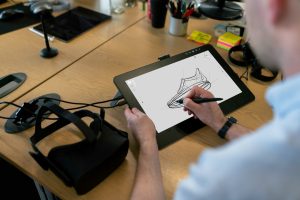How Educational Analytics Transform Teaching Methods Now
As technology continues to advance, it has made its way into the education system, bringing about significant changes in teaching methods. One of the most prominent advancements in recent years is the use of educational analytics. This powerful tool allows educators to gather, analyze, and use data to improve teaching methods and enhance student learning. In this article, we will explore how educational analytics are transforming teaching methods now and its impact on the future of education.
The Basics of Educational Analytics
Educational analytics, also known as learning analytics, is the use of data to gain insights into student learning and academic performance. It involves collecting, tracking, and analyzing student data, such as grades, attendance, and test scores, to identify patterns and trends. With this information, educators can gain a better understanding of student needs and make informed decisions to enhance their learning experience.
The Benefits of Using Educational Analytics
Educational analytics offer a wide range of benefits for both educators and students. By tracking and analyzing data, educators can identify students who may be struggling and provide them with additional support. It also helps to identify trends in student performance, allowing educators to adjust their teaching methods accordingly. Moreover, educational analytics can also help to identify effective teaching strategies and target areas that need improvement.
Educational Analytics in Action
Educational analytics has many applications in the classroom. For instance, educators can use it to track student attendance and identify students who may need additional support to stay on track. It can also be used to analyze grades and test scores to identify areas where students are struggling and adjust the curriculum to address those gaps.
Personalized Learning
One of the most significant advantages of educational analytics is the ability to provide personalized learning. By tracking student data, educators can identify each student’s strengths and weaknesses and tailor their teaching methods to meet their individual needs. This individualized approach to learning can greatly improve students’ academic performance and engagement in the classroom.
Identifying At-Risk Students
Educational analytics can also help to identify students who may be at risk of falling behind or dropping out of school. By analyzing attendance, test scores, and other data, educators can identify students who may need additional support. This allows for early intervention, which can significantly improve the student’s chances of academic success.
The Future of Teaching Methods
With the help of educational analytics, the future of teaching methods looks bright. The use of data to drive decision-making in education can greatly improve students’ learning experience and academic performance. As technology continues to advance, we can expect to see even more sophisticated forms of educational analytics and its integration into teaching methods.
The Importance of Ethical Use of Educational Analytics
Although educational analytics offer many benefits, it is crucial to ensure its ethical use. Student data must be safeguarded and only used for educational purposes. Moreover, educators should not solely rely on data to make decisions but rather use it as a tool to inform their teaching methods.
Conclusion
Educational analytics have revolutionized teaching methods and have the potential to enhance the education system even further. By using data to gain insights into student learning and academic performance, educators can better understand their students and provide them with a personalized learning experience. As technology continues to evolve, we can expect to see even more innovative uses of educational analytics to transform teaching methods further.
In conclusion, the use of educational analytics has the power to revolutionize the education system and improve student learning outcomes. As educators, it is essential to embrace this technology and use it responsibly to ensure its ethical and effective use. It is an exciting time for education as we continue to see advancements that will shape the future of teaching methods.











